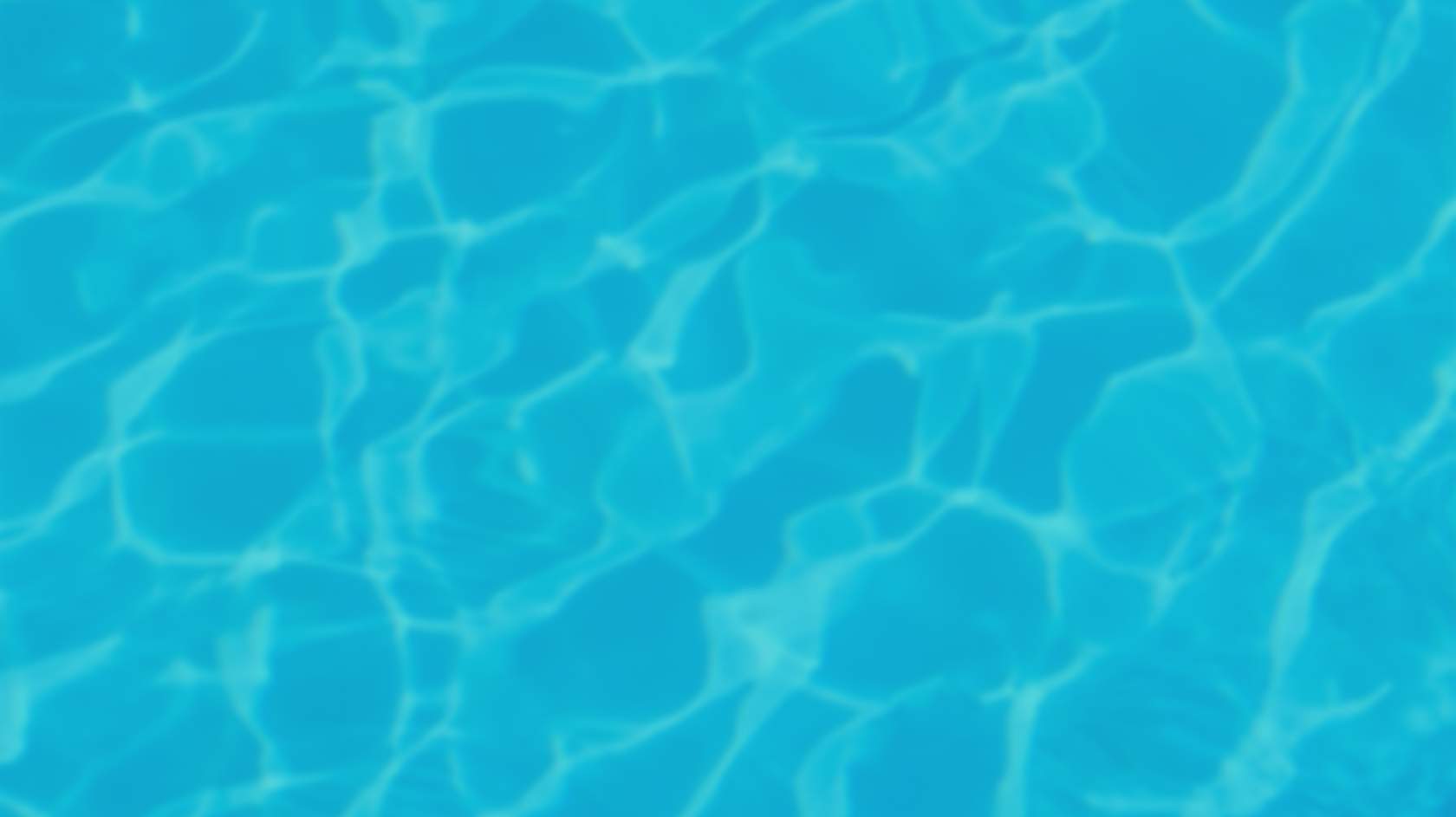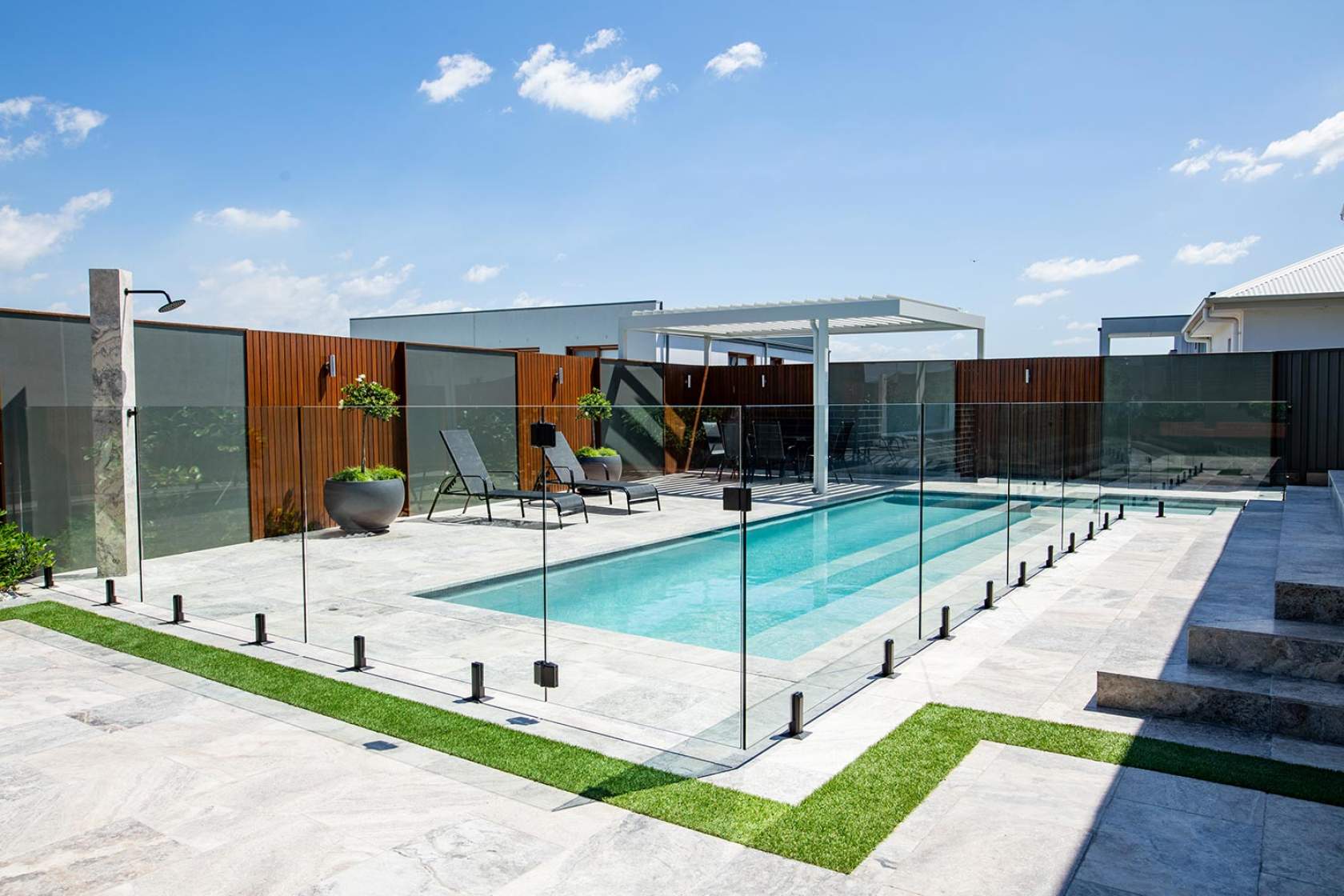

- Home >
- Caring for your Pool & Spa >
- Maintenance Schedules > Regular Maintenance
Regular Maintenance For Pools
The key to using less water, energy and chemicals
Maintaining a 12-month water management program is vital to maintaining a pool’s health and is the key to using less water and energy and fewer chemicals. Pool maintenance varies greatly through the seasons and is also dependent on climate. But for all pool owners, there are a number of key steps you need to take to ensure you keep your pool in tip top condition.
By following a regular maintenance program – either by doing it yourself or by engaging a licensed pool maintenance company – you will save both time and money, and make the most of your very special asset.
1. Circulate the water
Pool water must be circulated for the chemicals to work properly and to avoid bacteria and algae taking hold. Circulate for at least 12 hours each day during the swimming season. During the off-season, filter for at least six hours each day. The best time to circulate the water is during the day.
2. Check your equipment
Maintaining your pool equipment and using it properly will ensure your swim season runs smoothly. Anything that moves needs servicing and a preventative maintenance program is the best approach in the long run.
One of your most important pieces of equipment is the filter. It removes both visible debris and most microscopic matter. When material gets trapped on or in the filter, remove it by backwashing (check your manufacturer’s guidelines on backwashing). Filters also need to be chemically cleaned regularly to remove oils, scale and deeply embedded debris.
3. Brush and vacuum
All swimming pools have areas with little or no circulation. To prevent algae and bacteria from growing, the walls and floor should be brushed and vacuumed at least once a week. Brushing is a must, even if you use an automatic pool cleaner or regular service person.
4. Test and balance the water
Testing your pool water and ensuring it is safe to swim in is a vital part of managing a pool. The frequency of testing will vary for individual pool environments and bather loads, but should be undertaken at least once per week. Testing frequency should increase as required, based on usage and weather conditions.
It’s important to monitor the pH balance and chlorine levels regularly, not only to ensure the water is safe, but also to keep the water aesthetically pleasing. If you leave pool water untreated it could cause bacteria, viruses, algae and other organisms to develop in the water. The water will also become cloudy and affect the skin and eyes of swimmers.
Take a sample of water to your local SPASA pool shop every month for a complete water analysis. It’s free and greatly reduces potential problems.
5. Use the right products
The proper use of chemicals is essential for the longevity of the swimming season and for the health of users. You need to apply the right products, in the right order, to your pool water at the right time. Incorrect chemical levels can seriously damage your pool equipment and surfaces, shortening their lifespan.
To ensure your pool or spa is given the correct doses of chemicals, it is important to establish its size. Finding the size (volume) is a simple matter of getting the area of the surface of the pool or spa and then multiplying that by the average depth. To help you calculate the volume of your pool or spa and give your local SPASA pool shop all the information to make the appropriate recommendations, complete this form and take it with you.
Your local SPASA pool shop can set up a personalised maintenance program based on your needs.
Regular maintenance cycles
Getting a pool or spa water test at your local SPASA pool shop, or from one of our service technicians, means that the results will be tracked to collate a history of requirements for your water. However, you may still need to keep your own logbook if professional pool testing is undertaken less frequently than every week.
Your logbook should indicate:
Date and time of test
Parameters tested
Results of tests
Action taken
Any additional relevant notes
Use this Inspection Sheet to log your water test results to identify any trends.
Operate the filtration system six to eight hours a day in winter and 12 hours a day during summer
Regularly check sanitiser levels, ideally on a daily basis
Check the pH every two days
Test Chlorine weekly and adjust the amount you add to compensate for temperature changes throughout the year. Chlorine levels fall in warm months and rise in cooler months. For salt chlorinators, the dial of % Chlorine production will need to be adjusted.
Test pH and add acid as required, as indicated by acid demand test. Most often, the pH will be high, and acid will be needed.
Clean skimmer basket (and if used empty the skimmer sock).
Check water clarity.
Look for algae in the corners of the pool.
Check filter pressure gauge. If gauge says clean, then clean filter.
Check water level and add water if required. The water level should be halfway up the skimmer box.
All of the above, plus:
Test Total Alkalinity and adjust by adding Buffer, if necessary. Most often, the Total Alkalinity will be high, and no Buffer will be needed.
Take a water sample to your pool shop for Stabiliser (sunscreen) and Phosphate tests. They will also do Chlorine, pH and Total Alkalinity, which will be an excellent guide to how accurate your pool water testing is.
Check salt chlorinator cell and clean with cell cleaner, if necessary. Avoid using Hydrochloric acid, as you risk dissolving the coating on the cell plates. If your salt chlorinator is the self-cleaning / reverse polarity type, there should be minimal scale build-up, and it may not need cleaning.
Clean pump basket. Remember to grease the pump lid "o" ring with silicone grease.
Vacuum the pool into the filter, but if there is a lot of dirt in the pool, you can always vacuum to waste. Be aware this will lower the water level by 5cm so a top-up will be necessary. If you have an automatic pool cleaner fitted, you can ignore this step.
All of the above, plus:
Take a water sample to your pool shop to test for Calcium hardness. You should also have this test done if there has been a lot of rain which dilutes the Calcium and Stabiliser in your pool.
All of the above, plus:
Clean filter with a filter cleaner to remove oily residues and scale deposits that regular cleaning does not remove.
Clean salt chlorinator cell with cell cleaner even if it is self-cleaning. There will be some scale deposits at the top of the cell, which will reduce chlorine production.
Check pool surface for discolouration or stains and treat with a stain remover. Check pool cleaner and grease with silicone grease, where required.
Balancing your water
Chlorine, also known as sanitiser, should be tested weekly during the swimming season. This is the most important test as it measures the water's ability to kill (sanitise) harmful bacteria.
Irrespective of how you sanitise your pool or spa the requirement for a residual level of 1.0-2.0ppm of free chlorine remains the same.
High levels of chlorine may cause staining of your pool surface and bleaching of your test kit reagents giving false readings. Low levels of chlorine allow harmful bacteria to grow; the first sign of which may be algae present in the pool and swimmers ear in children.
pH levels should be tested weekly and be between 7.2 and 7.6 for best results. In this range the Chlorine is most effective, and the water is not harmful to the pool surface. It will also prevent sore eyes and skin irritations for swimmers.
Some fibreglass pool manufacturers recommended the pH be 7.0 to 7.2, always consult your handover documentation to ensure you are adhering to the manufacturer’s advice.
The Total Alkalinity Test should be tested monthly and sit between 80 and 120ppm. Total Alkalinity slows down the change in pH, so that you need to add acid less frequently.
Stabiliser prevents chlorine loss by sunlight. The Stabiliser test involves taking a water sample to your pool shop monthly during the swimming season. The result should be between 30 and 50ppm and must never exceed 50ppm. Stabiliser should not be used in indoor pools or spas.
The Calcium Hardness test involves taking a water sample to your pool shop monthly. Calcium is needed to protect the finish in concrete pool surfaces (pebble, marble sheen). Some pool shops will test for Total Hardness, which includes measuring the Magnesium present in the pool water and is a more accurate test of Hardness. Calcium Hardness should be between 200 - 400ppm.
The Salt Content test involves taking a water sample to your pool shop monthly or if a lot of rain has fallen. The salt level must be kept at the manufacturer's recommendation. A low salt level will lead to not enough Chlorine being produced, and the cell will be damaged. A high salt level and too much Chlorine will be generated, which may cause staining of your pool surface and Chlorine bleaching of your test kit reagent, giving false readings. Salt levels depend on the make of the salt chlorinator but usually between 4000 and 6000ppm.
